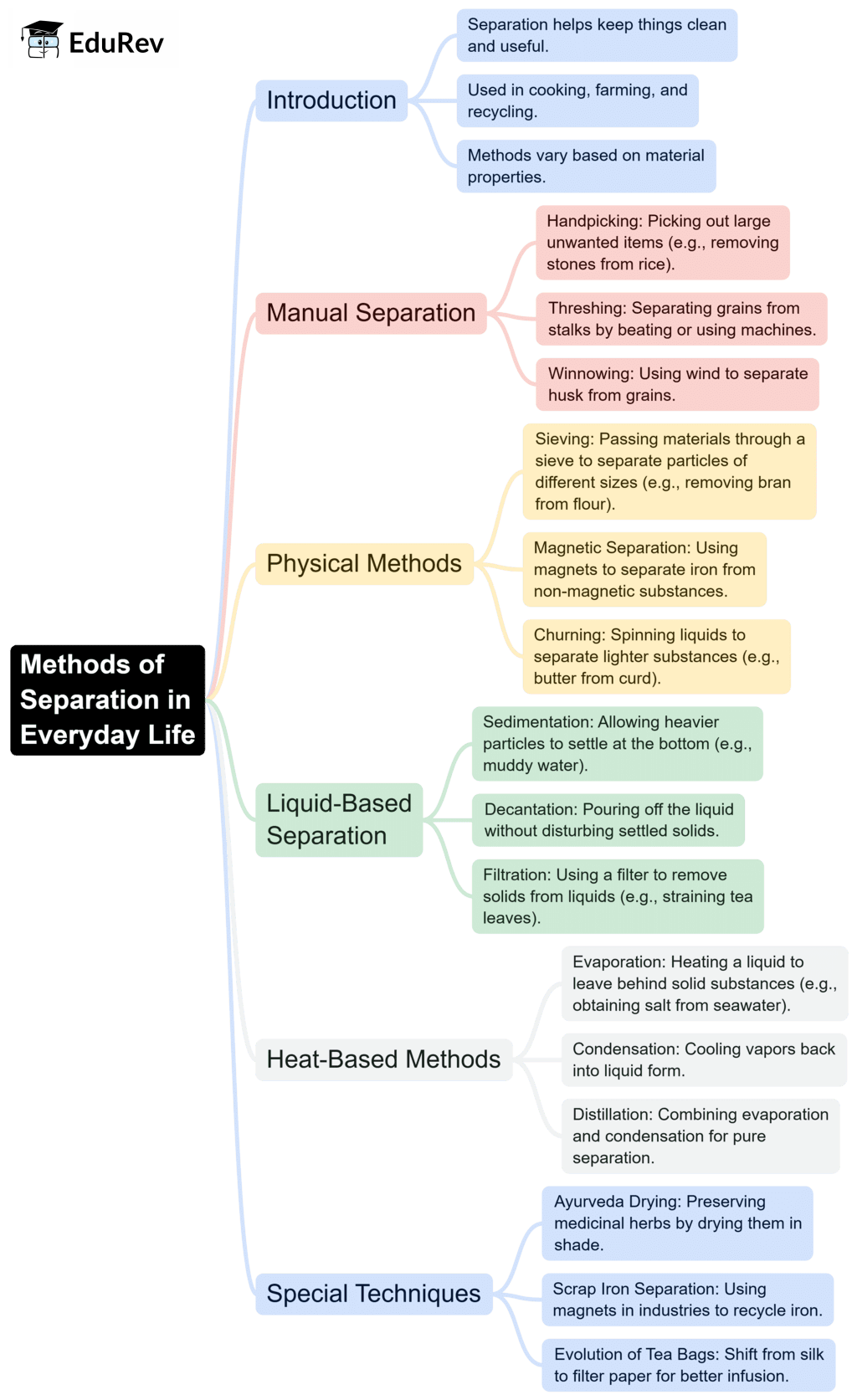Class 6 Exam > Class 6 Notes > Science Olympiad Class 6 > Mind Map: Methods of Separation in Everyday Life
Mind Map: Methods of Separation in Everyday Life | Science Olympiad Class 6 PDF Download

The document Mind Map: Methods of Separation in Everyday Life | Science Olympiad Class 6 is a part of the Class 6 Course Science Olympiad Class 6.
All you need of Class 6 at this link: Class 6
|
34 videos|116 docs|89 tests
|
FAQs on Mind Map: Methods of Separation in Everyday Life - Science Olympiad Class 6
| 1. What are the common methods of separation used in everyday life? |  |
Ans. The common methods of separation used in everyday life include filtration, evaporation, condensation, sedimentation, and magnetic separation. Filtration is used to separate solids from liquids, evaporation is used to obtain solids from solutions, condensation is used to collect vapors, sedimentation allows heavier particles to settle at the bottom, and magnetic separation is used to extract magnetic materials from mixtures.
| 2. How does filtration work in separating mixtures? |  |
Ans. Filtration works by passing a mixture through a filter, which allows only the liquid to pass through while retaining the solid particles. The filter can be made of paper, cloth, or other materials with small pores that trap the solid particles. This method is commonly used in water purification and separating sand from water.
| 3. Can you explain the process of evaporation and its applications? |  |
Ans. Evaporation is the process where a liquid turns into vapor when heated. This technique is commonly applied in everyday life, such as when boiling water to make tea or when drying clothes under the sun. It is also used to obtain salt from seawater by evaporating the water, leaving behind solid salt.
| 4. What is sedimentation, and where is it commonly used? |  |
Ans. Sedimentation is the process through which heavier particles in a mixture settle to the bottom due to gravity. This method is often used in water treatment plants to remove impurities from water and in laboratories to separate solid particles from liquids in various experiments.
| 5. How does magnetic separation work, and when is it used? |  |
Ans. Magnetic separation is a technique that uses magnets to attract magnetic materials from a mixture. This method is commonly used in recycling processes to separate metals from non-metals, such as extracting iron from scrap metal or separating iron filings from sand.
Related Searches
















